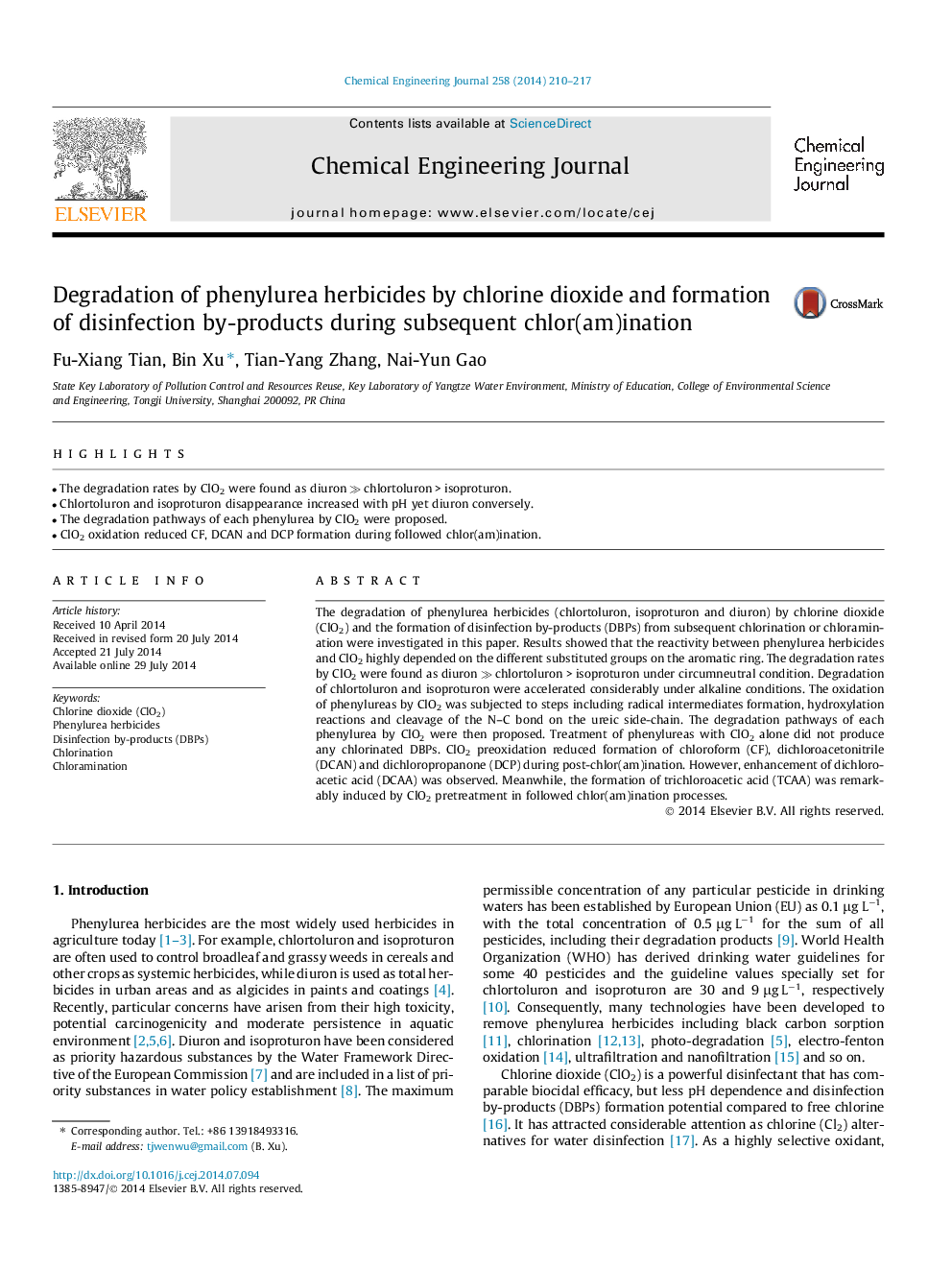| کد مقاله | کد نشریه | سال انتشار | مقاله انگلیسی | نسخه تمام متن |
|---|---|---|---|---|
| 146946 | 456383 | 2014 | 8 صفحه PDF | دانلود رایگان |

• The degradation rates by ClO2 were found as diuron ≫ chlortoluron > isoproturon.
• Chlortoluron and isoproturon disappearance increased with pH yet diuron conversely.
• The degradation pathways of each phenylurea by ClO2 were proposed.
• ClO2 oxidation reduced CF, DCAN and DCP formation during followed chlor(am)ination.
The degradation of phenylurea herbicides (chlortoluron, isoproturon and diuron) by chlorine dioxide (ClO2) and the formation of disinfection by-products (DBPs) from subsequent chlorination or chloramination were investigated in this paper. Results showed that the reactivity between phenylurea herbicides and ClO2 highly depended on the different substituted groups on the aromatic ring. The degradation rates by ClO2 were found as diuron ≫ chlortoluron > isoproturon under circumneutral condition. Degradation of chlortoluron and isoproturon were accelerated considerably under alkaline conditions. The oxidation of phenylureas by ClO2 was subjected to steps including radical intermediates formation, hydroxylation reactions and cleavage of the N–C bond on the ureic side-chain. The degradation pathways of each phenylurea by ClO2 were then proposed. Treatment of phenylureas with ClO2 alone did not produce any chlorinated DBPs. ClO2 preoxidation reduced formation of chloroform (CF), dichloroacetonitrile (DCAN) and dichloropropanone (DCP) during post-chlor(am)ination. However, enhancement of dichloroacetic acid (DCAA) was observed. Meanwhile, the formation of trichloroacetic acid (TCAA) was remarkably induced by ClO2 pretreatment in followed chlor(am)ination processes.
Journal: Chemical Engineering Journal - Volume 258, 15 December 2014, Pages 210–217